September 10–13, 2015
The Nordic Craft Pavilion, Révélations, Grand Palais, Paris, France
Curated by Katrine Borup, Agnieszka Knap, Anna Leoniak, Katarina Siltavuori, and Marianne Zamecznik
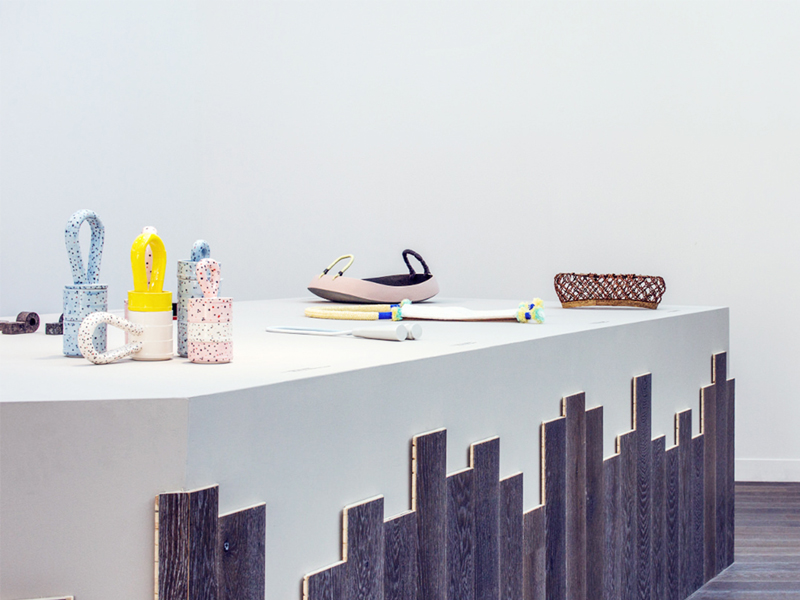
Norwegian curator Marianne Zamecznik is a relative newcomer to craft—she previously worked for 13 years as an art curator, and organized her first craft show in 2013—but her innovative approach to designing and organizing exhibitions has garnered her some important commissions, and caught AJF’s eye. The following interview was conducted in two phases, before and after the opening of magic language///game of whispers, a show that Marianne conceived and co-curated for Norwegian Craft at the Révélations fair in Paris. My first volley of questions was largely based on reading her essay, Exhibition Making as a Driving Force in Contemporary Craft Discourse, published in Crafting Exhibitions, and looking at the concepts that presided over the collective selection process for magic language///game of whispers. The essay is important, as it articulates some of the fundamental ideas that inform Zamecznik’s approach to curating, and her strategy for the Paris exhibition. Zamecznik refers to the concept of “dynamic object,” describes curation as a medium, and advocates for innovation and experimentation.
 The second part of the interview took place shortly after the installation of the show at the Grand Palais: the subtle curatorial process of Chinese Whispers had seduced many visitors, probably eluded some, and Zamecznik tells us why, in some cases, one should go easy on didactics. A photographic report on the exhibited objects—in the sequence in which they were selected—appears at the bottom of the article, courtesy of André Gali.
The second part of the interview took place shortly after the installation of the show at the Grand Palais: the subtle curatorial process of Chinese Whispers had seduced many visitors, probably eluded some, and Zamecznik tells us why, in some cases, one should go easy on didactics. A photographic report on the exhibited objects—in the sequence in which they were selected—appears at the bottom of the article, courtesy of André Gali.
Benjamin Lignel: Your essay advocates treating exhibition-making as a medium that relies on experimentation, “in the same way as any medium relies on experimentation.” Later in the text, you focus on “innovation” as a key element of curatorial research. “Innovation” seems quite a modernist criterion, and is a little unexpected in the context of your decidedly post-studio[1]point of view. Can you explain why that term is important to you?
Marianne Zamecznik: When advocating for treating exhibitions as any other medium and therefore as a space for experimentation, it’s important to keep in mind that exhibition-making largely is seen as an instrument for institutions to reach out and communicate with an audience, as a tool to participate in current discourse. Seeing exhibitions as tools and means to communicate—the goal being to communicate—reduces the exhibition to an instrument, a tool. In a time of unprecedented proliferation of exhibitions in the field of art, when art is made for exhibitions (hence the post-studio “problem”) and where exhibitions, at least in the last couple of decades, have played an ever-increasing part in legitimizing certain practices, curators have started making claims that the exhibition be treated as a medium in itself. This is their answer to the many, many pointless exhibitions that do nothing but place a few objects together, under the most daft and thoughtless heading possible, in order to obtain something else from it, be it meeting political goals, economic goals, strategic goals—whatever. So I see the exhibition not as a medium for artists exclusively, but for curators, too.
Comparing experimental exhibition-making with post-studio practice is therefore a bit confusing. I see post-studio practice as a result of how the art economy has changed artists’ conditions during the last decades, especially in the field of contemporary visual arts. In the applied arts, post-studio practices are comparatively less prevalent—craft artists are to a large extent still making things themselves, in their studios, and work on projects that aren’t only tailored for a specific context. Of course there are exceptions to this, such as craft artists working on a commission for a permanent public installation or an exhibition, but for me this constitutes an important difference between the two artistic practices.
Now, why is innovation important to me? I think my support of innovation is predicated on postmodern terms, not modernist necessarily (depends if one defines postmodernism as a part of modernism) in the sense that after the fall of the grand narratives and therefore under the auspices of “weak thought” (Gianni Vattimo) we do experiment and innovate, not with the goal of progress, but with the goal to find other answers than the ones grand narratives were able to come up with, to reveal paths that were previously overlooked. So the goal of innovation is a revisiting of history, if you like, a rewriting of the sciences: political, social, and economic. Postmodernism opened up these possibilities, which simultaneously brought with them this cacophony of noises and voices, conspiracies and doubts, and which in the end feed the postmodern quest for experimentation and innovation. Because of this overwhelming multitude, the institutions have become more important than ever in legitimizing what could be considered contemporary art with a capital C. In the end, they pick up certain ideas, designating them to the current discourses, streamlining them to follow what a few powerful institutions profess as being important and therefore “in vogue.” And the others follow. One could even say that because of the over-proliferation of exhibitions we see today, exhibitions are not anymore credible legitimators in themselves. Instead, institutional power has become increasingly important in this function.
Taking this into account, my advocacy of the importance of experimenting with exhibitions (inside as well as outside the institutions) should be understood in this light: underscoring the importance of the exhibition as a unique expression—one that is not subordinated to, or instrumentalized by, institutions—is a way of taking back that power. Because innovation is still one important driving force in the politics and economy of contemporary art, in the emergence of discourses. We may understand innovation as predicated on the goal of enlightenment, the betterment in the future. The goal of postmodern rewriting is not a better future per se, but a way to replace the oppressive grand narrative with a narrative about us. Now, whether this can be called innovation or not is probably subject to discussion, but I use the word in this sense. Innovation as a tool to be part of the story.
You explain in your essay how “today’s conservators understand that an object’s original appearance may no longer be a realistic or even desirable goal” and advocate instead for “presenting the work of art in a way that puts it in relation to culture at any given time.” By presenting an artwork in relationship to the culture of its time, it “continues to grow and produce. Constructively critiquing and regenerating itself.” I find that to be an extremely powerful and super-contentious idea. Can you describe, first, what this strategy stands in opposition to?
Marianne Zamecznik: Isn’t placing objects into stripped and seemingly neutral, “time-less” environments more contentious? Why else would curators and artists keep discussing the false promises of the white cube, scientific truth, and Western culture’s historicism bias, the belief that history determines the way things are and must be?
Duchamp was the first to realize that any readymade, non-art object on its own could be displayed as “art” if dissociated from its original context, use, and meaning. The dissociation is key to obtain and enhance aura, be it the auratic art object, the artist’s aura—such as Beuys’s shamanistic aura—or transference of aura to the event or the display itself, such as is the case with installation art, where aura is transferred from the object to the place, the museum, or gallery. The stripped, timeless gallery space provides an essential framework for that to be believable. Presenting objects as isolated and dissociated in the context of the legitimizing institution is essential in order to achieve the inflated value of an artwork.
The text you refer to is concerned with curating craft, and I suggested that presenting artworks in more direct relationship to the culture of their time may allow craft to carve out a different route for itself, utilizing a sort of “living” context that does not rely on the mechanism of dissociation in order to obtain aura (and value) but rather through their use and application. I know there is a strong opposition to this among craft artists. It is precisely the aura (and the inflated value of visual art) that is at stake—it is what applied art or craft seeks to obtain, on an equal level as visual art. One way to obtain this is by mimicking the way visual art is presented. Obviously this strategy doesn’t work.
I think it’s time that craft turn toward other exhibition strategies better suited to it, that will strengthen its position in contemporary culture over time. Craft or applied art should play on different strings than visual art—simply by being what they claim to be, through their use, application, and material value, as dynamic objects in the world, uninhibited by the double ontology that visual art struggles with.

Do I understand correctly that “dynamic object” refers to a way of treating objects (rather than to intrinsic qualities of the artwork itself)?
Marianne Zamecznik: Yes. I’ve borrowed the term from the field of conservation, because I see works of art or craft or any object as having a “life span” that plays out in real time, even when it is stuck in some storage somewhere. It’s an idea I got from the artist Øystein Aasan, with whom I developed the exhibition design for the sixth edition of Momentum, the Nordic biennale in Moss, Norway, in 2011. He talked about how the artwork was some day born in the studio of the artist, only to embark on a long journey, often outliving its creator. The exhibition moment was just one point in that life span.
I found the idea strange at first, because I was used to focusing on the work as a static entity. But of course it changes, especially considering the changes it undergoes in relation to discourses that surround the work. That is why a work, style, etc. seems to becomes obsolete, and we try somehow to overlook either the work or the way it relates to new discourses as they emerge, instead focusing on the artist’s persona, the brand, etc. In contrast, this way of thinking about the work—as having a life span—makes a lot of sense to me, especially when considering the way we treat objects or contextualize them in exhibitions or other presentation formats. I also happen to think that one should do things with art objects, like play around with them in different ways and see what happens.
You allude to Anton Vidokle’s manifesto in your essay—in particular to the fear that it is “exhibitions that produce art” as opposed to artists. You mention that fear, but you don’t really address it. So I have two questions:
• Do you think this issue is relevant to your practice?
• How do you address it?
Marianne Zamecznik: Yes, I think the issue Vidokle raises is very relevant—but in the text I mainly use his statement to show the skepticism many artists have toward curators and the over-proliferation of exhibitions in our time; his argument is ultimately that curators have too much power and that artists are somehow victims in that scheme. This is of course not an original statement by any measure—I’ve been met with this attitude since the first day of school, when I switched from studying arts and craft to become a curator. What I’ve always said to artists is that they have the power of “No”—just say “No” if you don’t want your work to be included in shows you don’t approve of. What I’m against is the attitude that curators are merely producers, coordinators, and that any curatorial proposition has an unwanted effect on the artist’s work. I’m against the view that art works need to be protected and locked into one “original” way of being seen or presented. I think the work of curators is precisely to interfere—to place the art work in contexts that creates new connections with the world, that challenges its boundaries and the artist’s intention. In my opinion, the art work can only gain from being used in that way—of being used by people, curators, readers of all sorts—that’s how the crude signal appears, that makes the object “flicker”—as opposed to the pristine signal—the original, uninterrupted object. So that’s why I included that quotation from Vidokle. He’s very skeptical of curators and the way the art market is oppressing artists. But, having said that, I think his skepticism is understandable. I’m skeptical, too. I agree that there are too many exhibitions being made for the wrong reasons. But it doesn’t mean that one should write off every curator and avoid any mingling with his or her ideas. I would rather encourage artists to employ a healthy criticality and assess whether the artistic proposition of a curator is of any interest to them. That’s all.
Having said that, on a personal level I’m always afraid to upset artists. I can be a real pushover when dealing with artists—they usually get what they want—if I am able to provide it. I like to enter into dialogue with the artists I work with—and trust is a big issue for me. I really want to give the artists a sense of being taken into account, that they can alter my scheme at any time—but they have to be able to convince me. I love to be convinced—it means that I learned something that made me change my mind; that potentially made me develop into a better version of myself. I mean, if I don’t get something out of this on a personal level, I might as well do something else. I don’t have to make exhibitions at any cost. My dream job is actually to be an artist’s assistant.
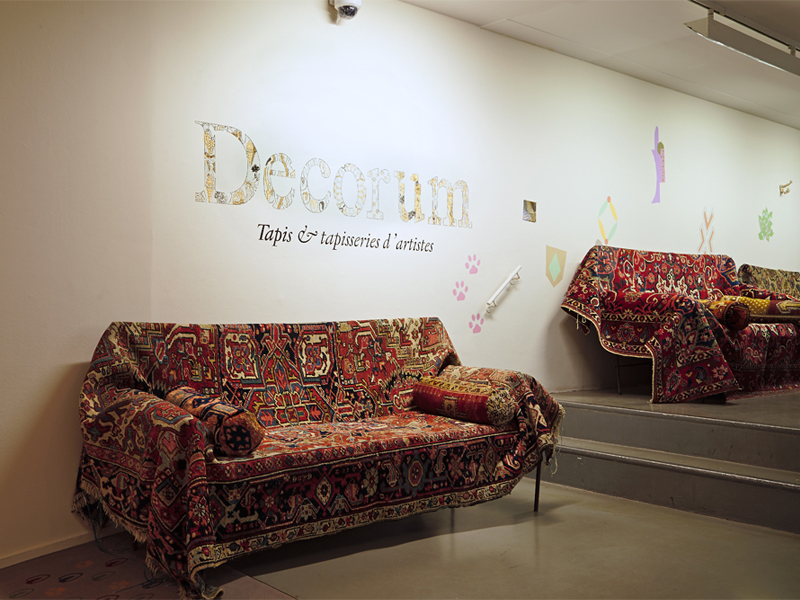
Your defense of museum objects having a “social life” and flickering (as opposed to trying to preserve them in the formaldehyde of the artist’s original intention) concludes with a thumbs-up to Decorum, a cross-disciplinary exhibition of fiber art curated by Anne Dressen at the Musée d’Art Moderne de la Ville de Paris (2013). That exhibition featured clusters of objects displayed according to “similarity”: They were together because they looked similar. Why was that exciting to you?
Marianne Zamecznik: I loved Decorum because it mixed the objects together, both into one coherent image as well as subordinating them under the same narrative or code, so to speak: the code of the home. The functions of objects in a home are quite specific—even the paintings or family photos on the wall. You read objects in a home as things to live with. And the Decorum show pushed the envelope of what can be presented in a museum of modern art: in terms of re-creating a sort of eclectic and eccentric apartment/home constituted by a mix of objects—all textile, or to be read as textile. I loved this multilayered approach and think this way of presenting the textile medium opens it up to the idea of use. Within the framework of the museum, which usually discourages “use,” except contemplation, this is a funny spin. I don’t think all the rooms of Decorum were equally successful. Some looked a bit like overstuffed museum display, where they hadn’t been able to make the living room space convincing enough, like the last section: the long corridor. A number of amazing pieces were on display in this section and therefore still added to the impressiveness of the show as a whole, but did not go all the way in terms of display coherence. And there is an almost reflexive skepticism toward the theatrical in arts, especially as regards display. So I liked Decorum for addressing that taboo.
As a curatorial device, the urge to put similar objects together is in no way a new or never-before articulated desire; quite the contrary. The world has seen infinite numbers of collections of similar things that have been presented under equally many banners or themes. I guess if you asked somebody on the street to make an “exhibition” it would be the first impulse: all blue things together. It’s like a child’s game. So in a way it’s a drift in us that is almost primal. What happens when you put two blue things together is that they both become similar and more different; the blueness makes them belong together but at the same time the difference between a blue plastic toy and a Viagra pill becomes more articulated. In this new juxtaposition, a vernacular can emerge: a sort of new way of putting the two very different things into the same universe. And maybe this connection between the child’s toy and the Viagra becomes a new story, something we bring with us into the future. I think the idea of this vernacular is what is exciting to me on a personal level.
The selection process for magic language///game of whispers is similarly interested in what an associative process can bring out: the exhibition’s curatorial principle was that you, Marianne, chose one object, sent it to one of your four co-curators, who had to respond to “your” object with one of their choosing, which they then sent to a third curator, etc. This game went on for several weeks until the five of you had selected a total of 25 works. Can you tell us, at this stage (one day before installation) what you learned, what you enjoyed, what you found challenging?
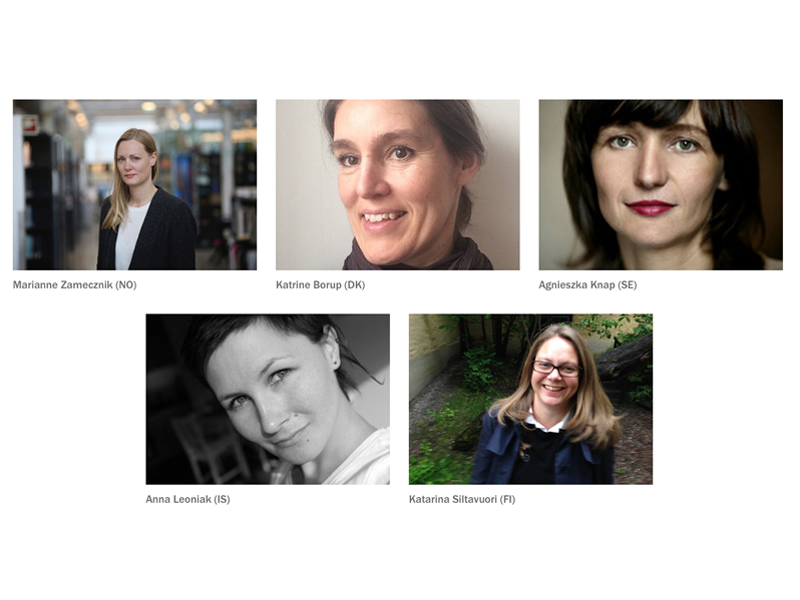
Marianne Zamecznik: There are so many things—the challenges were, among others: How can I possibly convey the idea I had in my head to my co-curators? Would they understand where I wanted to go with this? Would they think it was fun and important, too? Or would they be provoked that I tried to press this whole concept over their head? Another problem was that of the role of the artist: in this game they are really providers of pieces already conceived before the show. Their participation in the exhibition-making process is sort of nullified. As I have stated before, I enjoy working with the artists, on their terms. But I realized, too, that sometimes the curators need to have a strong direction, to let their intuition speak loudly, maybe louder than the artist’s voice. This is one of the shows where that is necessary.
Another challenge is obviously to make a show where you have no idea about the outcome. I mean we have a sort of idea now, but when we start installing tomorrow I guess we will all be really thrown off by some of the juxtapositions: some will be nice, at least I hope, but some might be just ugly and “wrong.” Scale, textures, colors: there are so many surprises to come! But this possible mega-failure is also what I enjoy, at least now, haha! Ask me again on the opening, see if I’m still enjoying it! I learned that there are only so many things you can deal with in one show. I know that this game of ours is activating a vast array of topics (such as the problem of art as commodity, the problem of power, language, the usological aspect, the tilted selection, to mention but a few), which is what I like, but at the same time this show will not be able to bring all those topics to the surface, let alone to some sort of fruition. It will remain a proposition. But I’m hoping it instigates discussions further down the line, that these issues will be picked up and developed in the future—such as ontological questions and how to apply modes of use to craft and how it can stir a vernacular that feeds into the discourses about contemporary craft. I want to stir the discourse in the field of crafts, this I find crucial.
I interpret your interest in magic in part as a way to explicitly de-rationalize exhibition-making. Invoking the magical is a form of countermeasure against binary models of object identification (it’s either this or that): magical thinking lets objects have multiple—not necessarily knowable—definitions; magical thinking makes room for the totemic, and the animist … and suddenly, there is a metaphysical elephant in the room. This opens up new curatorial possibilities: how did your co-curators react to that, and how do you intend to explain these possibilities to the public?
Marianne Zamecznik: Work on magic means authorizing a multiplicity of meanings as opposed to the safe kind of knowledge that rational thinking aims to describe, as you say, in the binary scheme “true/untrue,” which usually ends with the imposition by the stronger culture. Destabilizing this metaphysics and expanding the horizon of possibilities (thanks to epistemological tools such as the one that magic’s tradition can lend us) is an act of “speculative curating” that comes from an awareness that there can be several points of view, possible descriptions, itineraries, resonances etc. It means to give space to the other (public or co-curator) and to the object of your curating, so to speak. This emphasis on a polytheism of value is not a generic evaluation of the possibility of knowledge, but a strategy to reinforce individual experiences through a “re-enchantment of the world.”[2]I would say that this “speculative curating” is about the object and its internal diversity, and I think the other curators found this aspect interesting. Although we didn’t talk about the term “speculative curating,” nor the title of the show, Magic Language, I got a feeling that they appreciated this aspect of the project.
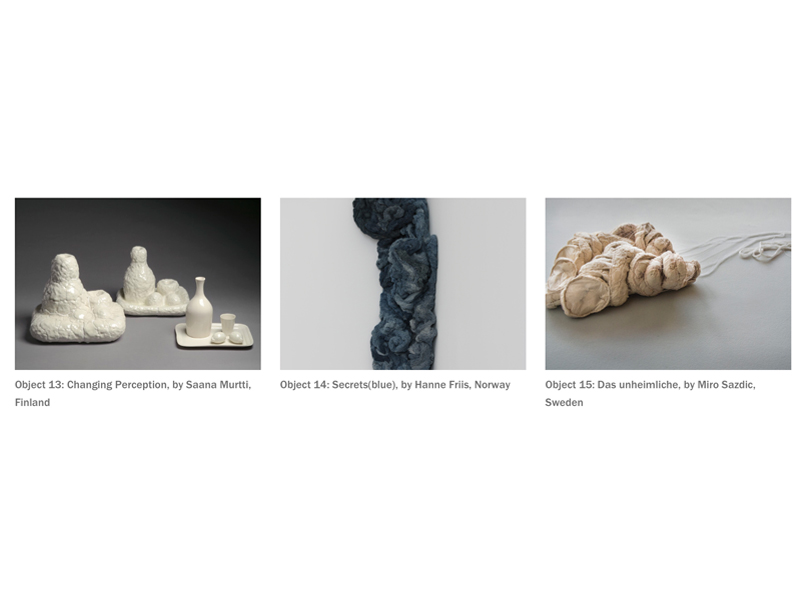
Explaining this aspect to the public might happen in the way that visitors would pick up the catalog and read the curators’ statements, following the reasoning for each object, exposing the gaps between the stories, and hopefully picking up on the subjective voices in them, and from that understand that any other description or reasoning, such as their own, could have stood in their place.
But the exhibition did not need the catalog to be read; the works themselves spoke to the viewer directly who, in their minds, might organize the works in any other possible constellation than the laid-out order (following the numbers provided). I would hope that the viewers (or at least their subconscious) would pick up on the several possible routes in the loose placement within the order, given the somewhat random juxtapositions that happened on that plinth.
On September 9, 2015, just as you received the last question, you actually opened the show, and I came to visit the next day. Looking at the objects in the flesh—and their powerful arrangement along a single, broken line—I better understood one important aspect of Chinese Whispers: how difficult it was for the five curators to refrain from considering the object they’d just received with the wealth of intellectual instruments at their disposal. They had to force themselves to look at it from a formal/material—almost pre-linguistic—point of view. For example, when your co-curator Agnieszka Knap received House 4, by Maria Nuutinen, she had to think of it not as a representation of a typical house built for soldiers after World War II, but as an enameled surface that possibly looked like a container. “I’d do an exercise,” she writes in the exhibition booklet, “where I imagine that I’ve never seen a house before” (her answer to that object was a series of mixed media containers by Maki Akamoto.)
 This procedure for connecting craft objects makes the history of object making and their interpretation secondary to other fleeting and subjective associations. It requires that curators and visitors unlearn some of what they know, and then look at the way things resonate together. Is that your great hope for unleashing the power of craft? To favor experience over knowledge, and let objects “speak for themselves”? Are you not taking a huge gamble on your public’s capacity to see the subtle stories that you have woven together across five countries?
This procedure for connecting craft objects makes the history of object making and their interpretation secondary to other fleeting and subjective associations. It requires that curators and visitors unlearn some of what they know, and then look at the way things resonate together. Is that your great hope for unleashing the power of craft? To favor experience over knowledge, and let objects “speak for themselves”? Are you not taking a huge gamble on your public’s capacity to see the subtle stories that you have woven together across five countries?
Marianne Zamecznik: First off, to encourage really looking at things and trying to unlearn some truths that have been passed down to us is in my opinion a legit reason to make shows. The unleashing of hidden powers in this manner isn’t necessarily beneficial exclusively to the field of crafts—it could be useful in any other field. But I wouldn’t say it’s about favoring experience over knowledge. It is about rehashing knowledge, asking stupid questions, turning things on their head in order to look again, to know more. I have a hard time freeing myself from the Enlightenment ideal; still aiming for some sort of progress.
As for the viewer’s experience: What do I know about the knowledge of others? Not so much. I can tell a story—write it down or make an explanation using a number of pedagogical tools, but in the end I have very little control when it comes to the experience of the viewer. Communicating with others is always a gamble, to use your phrase. But I happen to like gambling, for sports. What I find interesting is to set up a sort of loose grid or scheme, which allows for the co-authorship of others, where there is room for randomness, overlaps, serendipitous connections, alterations. In this case, the scheme is easy to grasp if one picks up the booklet or talks to the guide. The viewer doesn’t really need to have a specific knowledge to be able to grasp the method; the Chinese whispers, as adapted to a curatorial set of rules, is easy enough to get your head around. Once viewers learn this, they can assess whether they think the connections between the works make sense, they can make other connections, create another order within the selection of objects in front of them. They are invited to play along. As a viewer myself, I enjoy being engaged in the storytelling, I like to have access to the scheme or grid “behind” the show and to consider the conditions of the show while seeing the show. Sometimes it can be too didactic or stupid, so much so that it ruins the experience and I just walk away from the exhibition, from the works, without having experienced anything but indignation. In my eyes, that is the biggest gamble when making shows like this—it’s what would keep me awake at night.

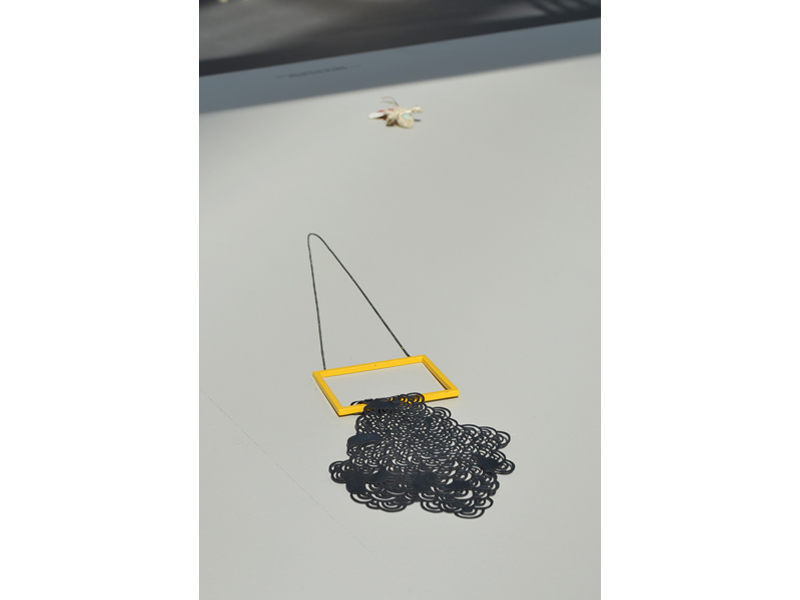

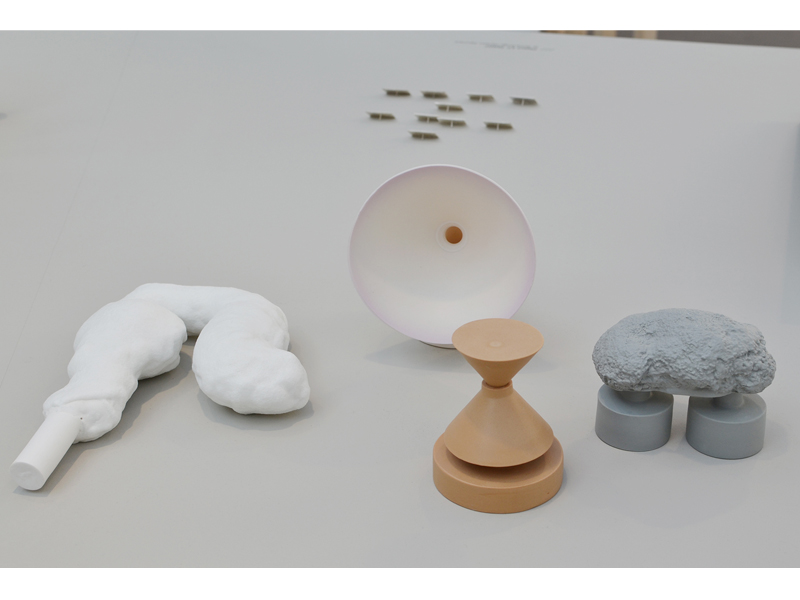
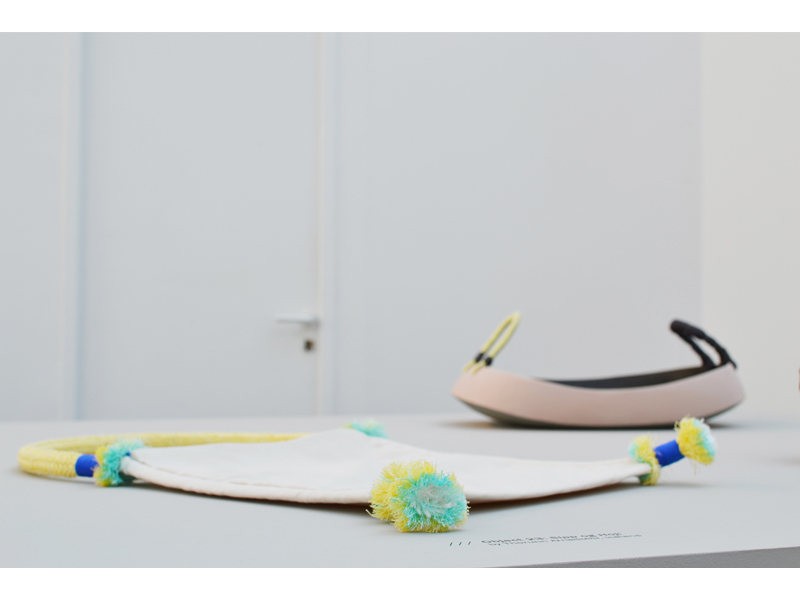
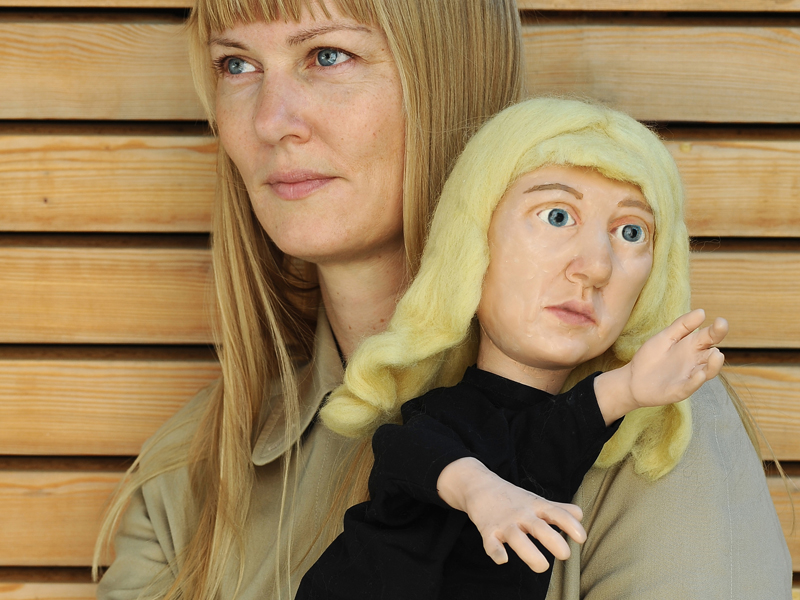 Marianne Zamecznik is an artist, curator, exhibition designer, and recently appointed director of the art festival Oslo Open. Following her formal arts education at the Oslo National Academy of the Arts and University College of Arts, Crafts and Design in Stockholm, she co-founded the cultural outreach program and itinerant exhibition venture Simon Says in 2002. Zamecznik was also Managing and Program Director at 0047, an independent exhibition and residency organization focused on art, architecture, and collaboration, between 2004 and 2010. Recent independent curatorial projects include A Midsummer Night’s Scream at De Appel in Amsterdam, magic language///game of whispers at Revelations ll in Paris, and Secondo Stile/Tent at Cité des Arts in Paris. She is part of the Institute of Usership, a joint research project at the Oslo National Academy of the Arts. Zamecznik constitutes half of ZAMAAS, an exhibition design studio established together with artist Øystein Aasan in Berlin.
Marianne Zamecznik is an artist, curator, exhibition designer, and recently appointed director of the art festival Oslo Open. Following her formal arts education at the Oslo National Academy of the Arts and University College of Arts, Crafts and Design in Stockholm, she co-founded the cultural outreach program and itinerant exhibition venture Simon Says in 2002. Zamecznik was also Managing and Program Director at 0047, an independent exhibition and residency organization focused on art, architecture, and collaboration, between 2004 and 2010. Recent independent curatorial projects include A Midsummer Night’s Scream at De Appel in Amsterdam, magic language///game of whispers at Revelations ll in Paris, and Secondo Stile/Tent at Cité des Arts in Paris. She is part of the Institute of Usership, a joint research project at the Oslo National Academy of the Arts. Zamecznik constitutes half of ZAMAAS, an exhibition design studio established together with artist Øystein Aasan in Berlin.
[1] The expression “post-studio”—which I came across in a text by Lynne Cook—refers to artists who behave like film directors, and whose work toward an exhibition might require them to hire some people to work for them, or to stage an event whose entire production will take place in the gallery. One of the consequences of this is that the “work” does not exist prior to its exhibition. Lynne Cooke, “In Lieu of Higher Ground,” in What Makes a Great Exhibition?, ed. Paula Marincola (Philadelphia: Philadelphia Exhibitions Initiative, 2006), 32.




